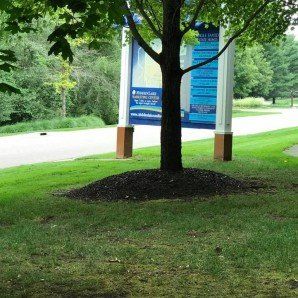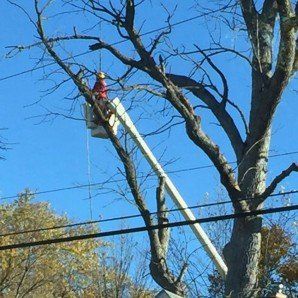Tree Services in Fenton, Michigan
Why do trees in the landscape need our help?
Why is it that trees in a landscaped setting
need care and maintenance, while forest trees don't? Trees in the landscape are living in a hostile environment more often than not. God designed trees to grow in a certain environment, but when humans get into the act, we can do more harm than good even though we have the best of intentions. Trees and shrubs were not designed to contend with conditions such as some of the following
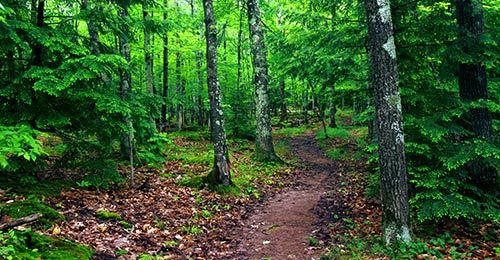
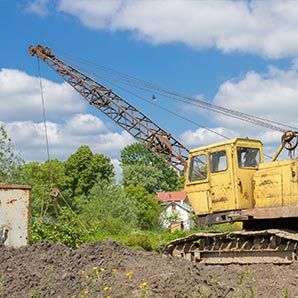
Construction damage
Root and trunk damage caused by construction activities such as trenching, grading, digging and stripping the site of topsoil can wound trees and compact soil. The damage done may show immediately or can take years or even decades to show. Unprotected trees are severely weakened in the construction process.
Improper planting/mulching
Planting trees to deep or over mulching will cause stress in the plant which can lead to decline and death.
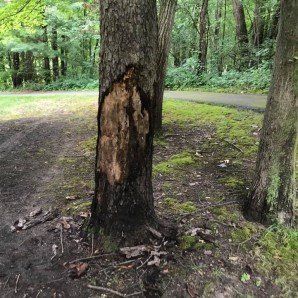
Nutrient deficient soils
Soils in the landscape, particularly lawn areas, are typically made up of non organic material because the topsoil was stripped away during the construction process and therefore have little or no nutritional value for the plants.
Storm damage / improper pruning
Trees damaged by storms or improper pruning techniques such as topping and lion tailing, are weakened structurally and biologically and must expend valuable stored energy to respond to the wounds and loss of foliage.

Insects and diseases
Many landscape trees and shrubs are attacked by insect and disease pests because their resistance is low due to poor growing and environmental conditions.
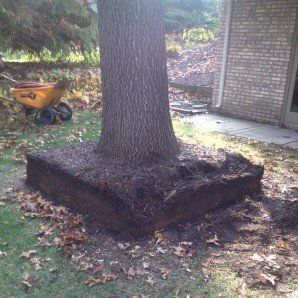
Improper location
Trees planted in the wrong environment, such as too much or too little shade, water, light exposure or wind exposure will not grow properly. Poor drainage and soil composition will cause root damage. Planting a tree that requires a large space to grow in a small space or too close to other trees will be detrimental.
Tree Services
- Full Service Tree Care
- Tree Removal
- Tree Planting
- Tree Fertilization
- Plant Health Care
- Stump Removal
- Stump Grinding
- Storm Damage
- Consulting Services
- Insurance Appraisals
- Brush Chipping
- Cabling & Bracing
- Field Mowing
- Filling of Stump Holes
- Decorating Christmas
- Insect & Disease Control
- Diagnostic & Consulting Services
- Root Zone Aeration
- Tree Pruning & Trimming
Pruning
There are many reasons to prune trees, from small newly planted trees to established mature trees. The most important reasons from an arboricultural aspect fall under the pruning classification of Crown Cleaning, and they are:
To improve health and vigor of trees by removing dead, weak, nonproductive or infected limbs which drain energy from the tree but do not contribute energy to the tree.
To improve the structure of the trees by providing proper spacing of limbs, eliminating cracked, broken or hazardous limbs and eliminating co-dominant limbs and leaders where practical.
To sanitize trees infected with disease or infested by insects.
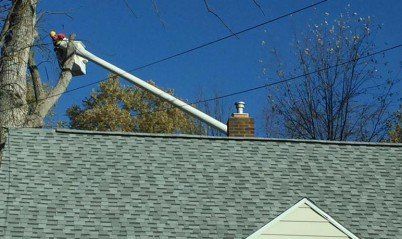
Other more subjective types of pruning include:
Crown Raising
Provides clearance from buildings, walks, drives, streets, lawns etc…
Crown Thinning
Provides light through canopy to lawn or garden and decreases wind resistance to help storm proof trees.

Vista Pruning
Provides a particular view of an object of area through the crown of the tree from a particular vantage point.
Crown Reduction
Reduces the height or spread of the tree canopy on one or more sides of the tree or the top of the tree. Whatever your pruning needs, our professional arborists can meet them. We know how to work a saw, but more importantly we know how trees work.
We adhere to the American national Standards Institute A-300 Pruning Standards.
Tree Removal
Our experienced arborists are experts in the removal of trees in confined areas such as back yards, between buildings, and in sensitive landscape areas.
Stump Grinding
Stumps can be ground from 4-18 inches below ground making it possible to plant grass, trees or shrubs where the tree once stood.
Insect & Disease Diagnosis
Diagnostic services are provided to determine causes of and treatments for sick trees. (There is a $45 diagnostic fee for this service which can be applied to any plant health care services that are performed).
Plant Health Care
We offer 5,6 and 7 visit plant health care programs to monitor and treat as needed key plants in the landscape for insect and disease pests. In addition we will make recommendations for healthy cultural practices such as proper watering, mulching and pruning. PHC programs are tailored to the specific needs of your landscape as well as dealing with unforeseen or unexpected issues.

Fertilization
We have a number of fertilization and soil amendment formulations to meet the requirements of your trees and shrubs.
Root Flare Excavation
Most trees transplanted into the landscape have excess soil or mulch built up above the trunk flare of the tree. These materials hold moisture against parts of the trunk which must be kept dry. If these tissues are not allowed to dry out, crow rot fungi will set in and disrupt the vascular system of the tree.
Consultation
Consultation services are available for planning tree protection plans for construction projects, implementing specifications for proper planting of new trees, evaluation of hazard trees and determining values and or replacement costs for damaged trees for insurance and legal matters.
Oak Wilt Qualified Certification
Images provided on this website are for personal, non-commercial use. Republication, retransmission, or reproduction of such images is strictly prohibited.

